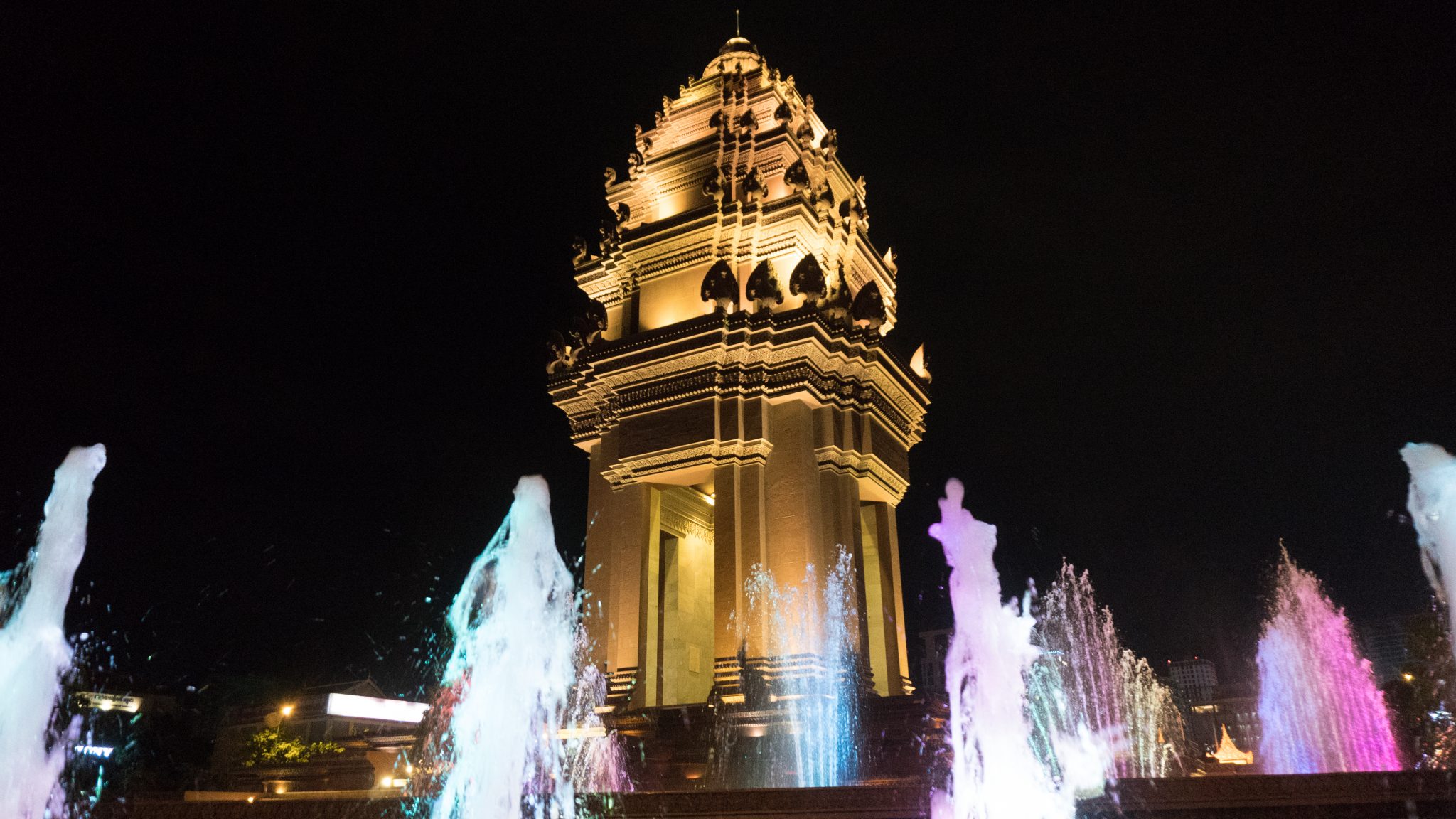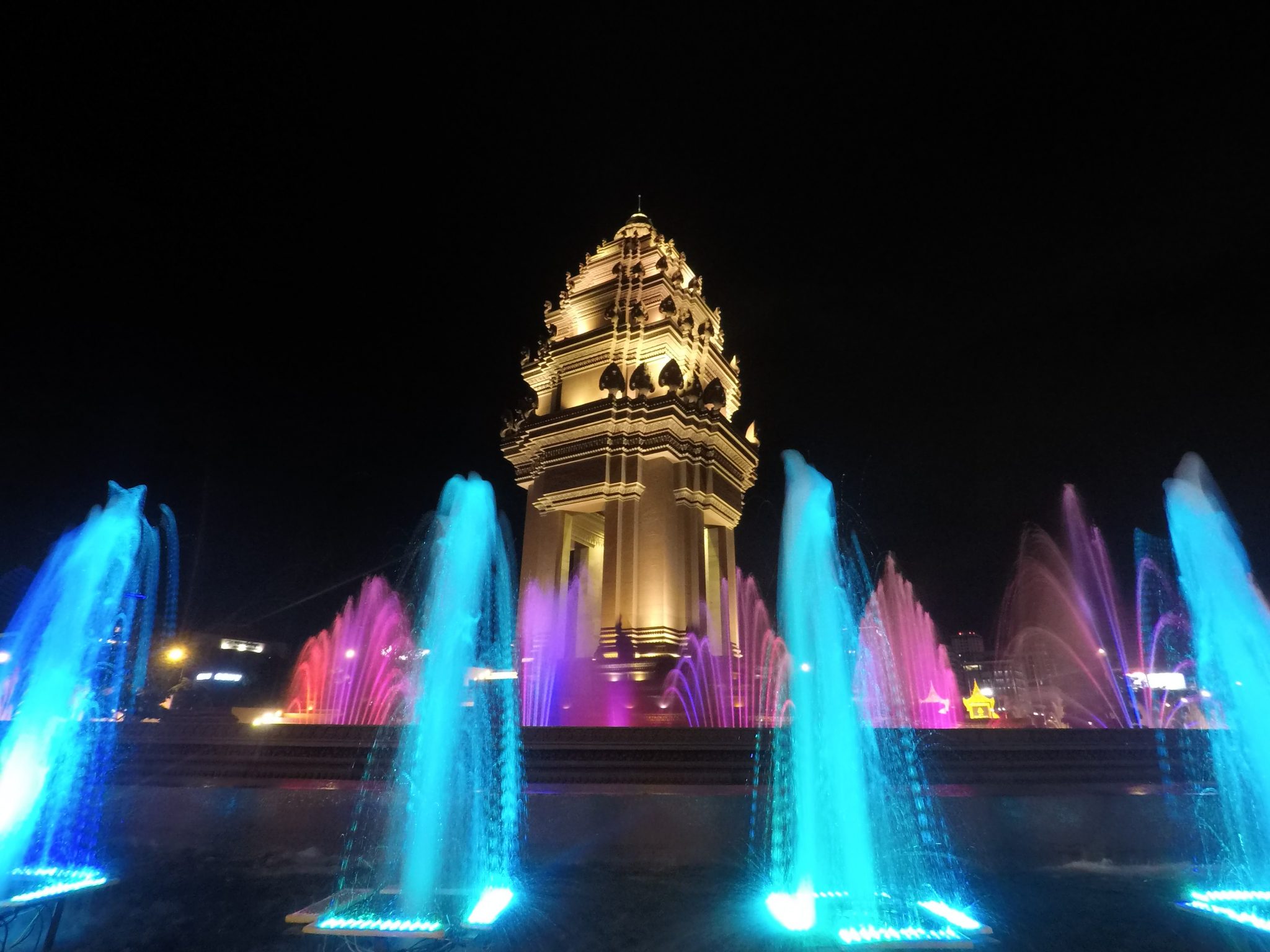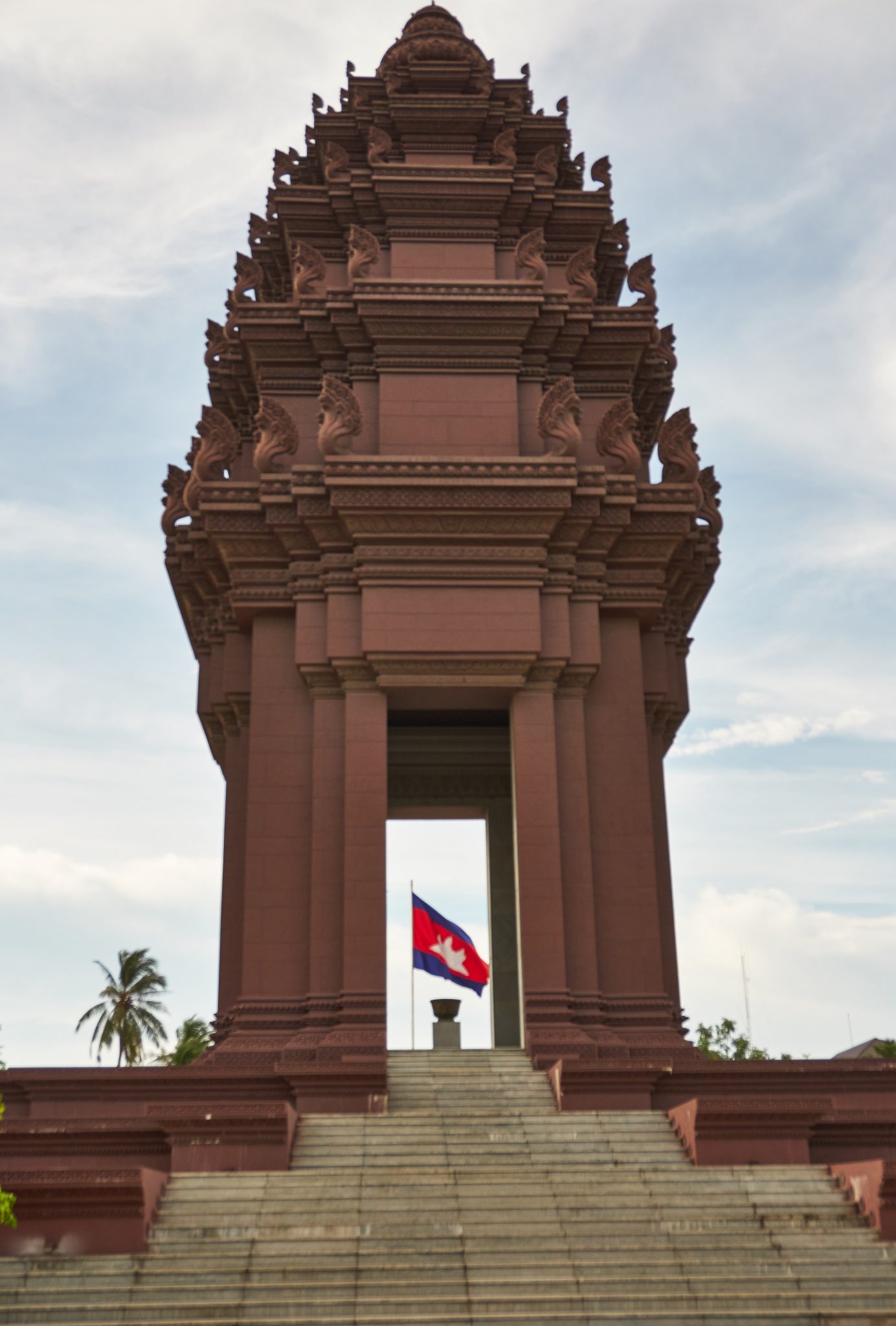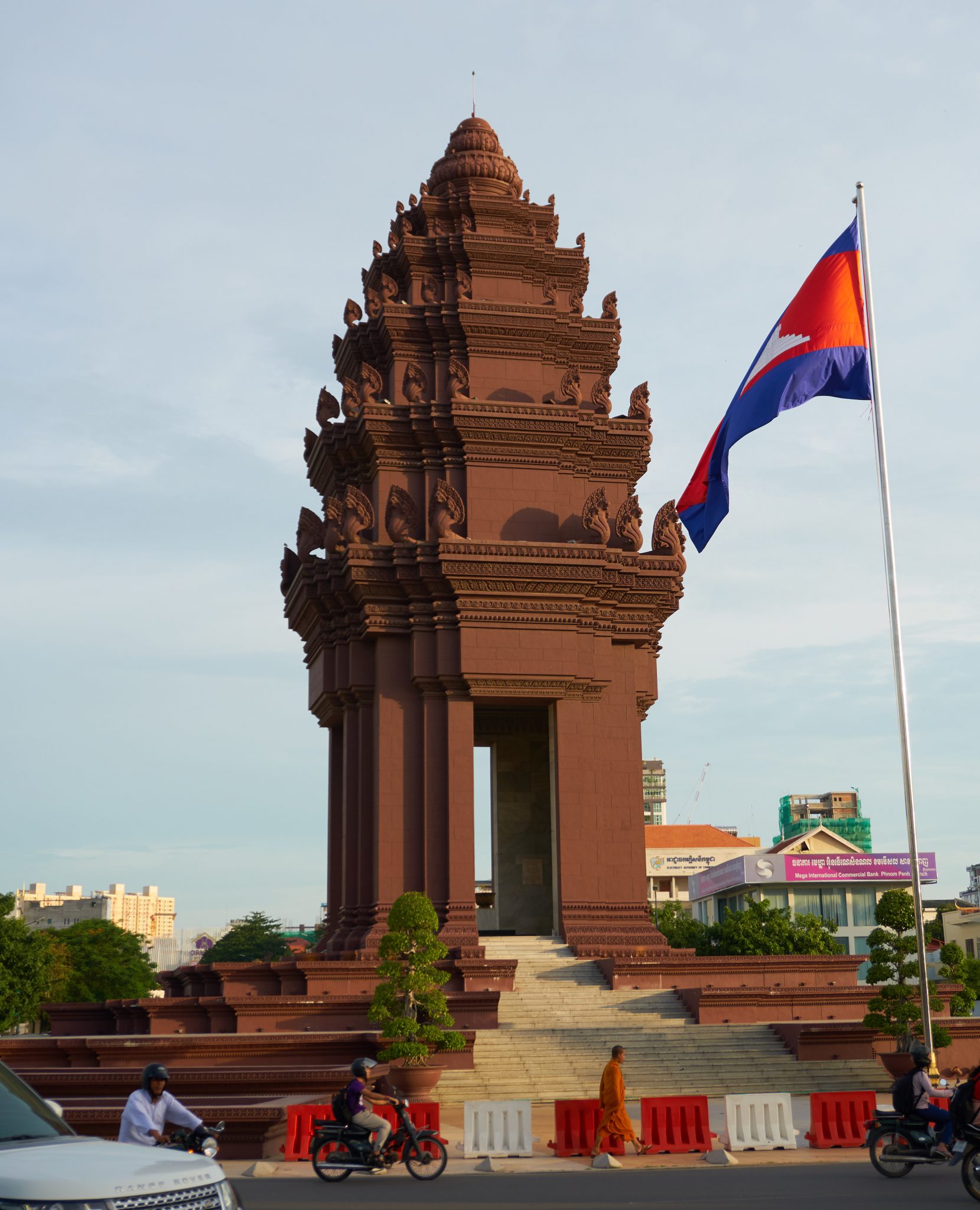Independence Monument
Constructed in 1958 to mark Cambodia’s independence from French colonial rule – it officially ended in 1953, Independence Monument was designed by arguably Cambodia’s most celebrated and respected architect Van Molyvann, who sadly passed away in 2017 at the age of 90.
Vann Molyvann
Vann Molyvann was at the forefront of a generation of Cambodian architects who developed an architectural style dubbed New Khmer Architecture. Born in Ream, Vann Molyvann was educated at École Nationale Supérieure des Beaux-Arts in Paris, and also was responsible for building iconic structures in the capital. These include Chaktomuk Conference Hall, the Institute of Foreign Languages, Olympic Stadium, Royal University of Phnom Penh, and the now destroyed White Building.
The monument is centrally located at the crossroads between Norodom Boulevard and Sihanouk Boulevard, and is often used for official purposes during Cambodian holidays and days of national celebration.
In truth, the Cambodian capital is not exactly blessed with landmark buildings, unless you count the recent sky-rise additions to the skyline, however, Independence Monument is undeniably one of them. Surrounded by fountains, it features a ceremonial flame at its centre.
The roundabout surrounding the monument can become chaotic with traffic at busy times of the day, so be careful if you wish to cross the roads to get a good picture. However, one of the great aspects of its location is you can combine a trip with visiting popular areas, such as BKK1 and the Bassac Lane area, where you can enjoy the excellent food and lively nightlife.
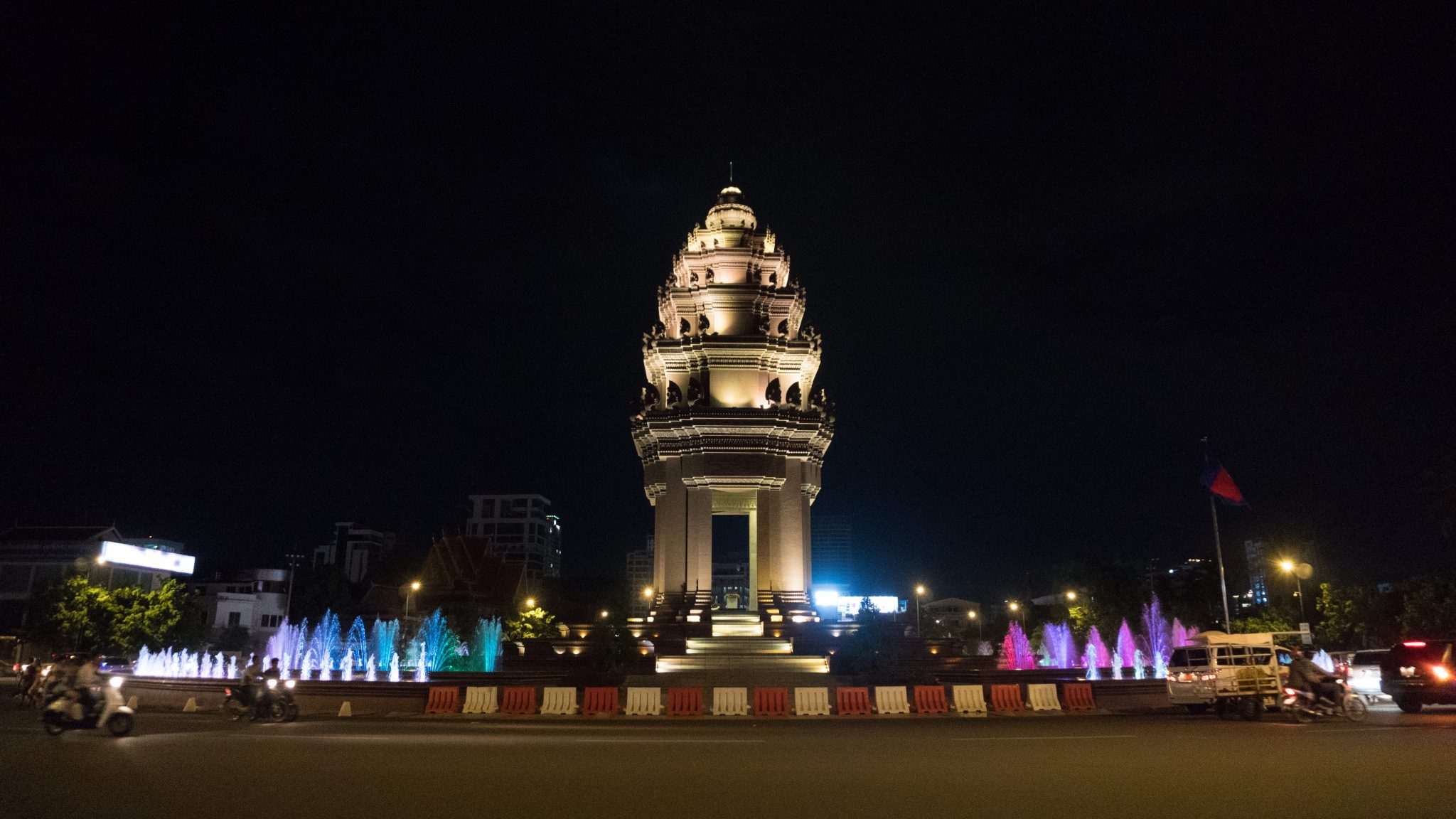
Where is Independence Monument?
The monument lies at the junction of Sihanouk and Norodom Boulevards right in the heart of the Cambodian capital, Phnom Penh.
Nearby Attractions
It is close to Norodom Sihanouk Monument and just a ten minute walk from the Royal Palace and the National Museum of Cambodia.
